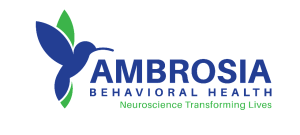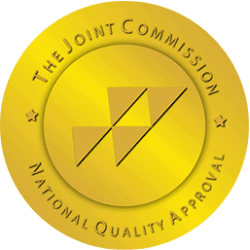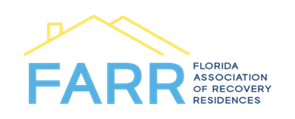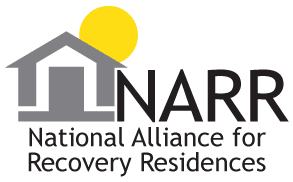An Exploration of Indicators and Actions for Concerned Parents
As children transition into the tumultuous years of adolescence, the associated transformations can be profound, affecting their emotional, social, and physical development. One of the critical concerns for parents during this phase is to recognize whether their teenager is engaging in substance use, particularly drug use. Understanding the signs that may indicate drug use is paramount, as early intervention can significantly mitigate the negative impacts of substance abuse. This post seeks to explore the common indicators that may suggest a teenager is using drugs, alongside practical steps parents can take in addressing their concerns.
To begin with, behavioral changes often stand out as the most notable indicators of potential drug use. A sudden shift in a teenager’s baseline behavior may warrant closer scrutiny. For instance, teenagers who previously exhibited conscientious study habits may demonstrate diminished academic performance, including declining grades and a lack of interest in educational activities. Attendance issues, such as frequent absences or unexplained tardiness, can also be a signal. Alongside declining academic performance, an alteration in social circles can arise. If a teenager begins associating with a different group of friends—particularly those known for experimenting with drugs or engaging in delinquent behavior—parents should take heed.
Moreover, emotional instability is a hallmark of adolescence, but when emotions swing to extremes—such as uncharacteristic aggression, unusual withdrawal, or unexpected mood swings—such changes may be linked to drug use. Increased secrecy, such as avoiding family interactions, lying about whereabouts, or becoming defensive when questioned, are behavioral indicators that may point to substance involvement. Additionally, neglecting established hobbies or interests may be a consequence of drug use, as substances can alter one’s priorities and motivations.
Physical symptoms are also critical to consider when evaluating a teenager’s potential substance use. Parents may observe distinctive changes in their child’s physical appearance, such as diminished personal hygiene and neglect of grooming habits, which could suggest an ongoing struggle with substance abuse. Changes in sleep patterns—manifesting as excessive sleepiness during the day or insomnia at night—may also be a red flag. Furthermore, specific physical signs may vary based on the substance used. For example, a teenager using marijuana may exhibit red, bloodshot eyes as well as an unfamiliar odor on their clothing or breath. Stimulant use may result in increased energy, excessive talking, and a loss of appetite.
Environmental factors also warrant consideration. Parental vigilance regarding the teenager’s surroundings, including their room or personal belongings, can provide insight into potential drug use. Discovery of paraphernalia, such as rolling papers, pipes, or small bags often used to contain drugs, may signify substance use. Additionally, unexplained financial difficulties, such as missing money or valuable possessions, can suggest the necessity to fund drug habits.
Once parents suspect their teenager may be using drugs, it is critical to approach the situation thoughtfully and constructively. Engaging in open, non-judgmental dialogue is essential. Creating a safe environment where teenagers feel comfortable to share their experiences and challenges fosters trust and may lead to more candid discussions regarding drug use. It can also be helpful to express concern for their well-being rather than focusing solely on punitive measures, which may further alienate the teenager.
Additionally, parents should remain observant and educated about the risks associated with specific substances and trends among adolescents. Staying informed about the latest youth drug behaviors can provide a foundational understanding and prepare parents for potential discussions.
If concerns about drug use persist despite open dialogue, seeking the support of professionals—such as counselors, school officials, or medical practitioners—can facilitate appropriate intervention. They are equipped to provide tailored guidance and resources to navigate this challenging terrain.
What to do if your Teenager is Using Drugs

The first step in addressing drug use is to engage in open and honest communication. Parents should create a safe environment where their teenager feels comfortable discussing sensitive topics. Initiating a non-confrontational dialogue can help the parent understand the motivations behind their child’s behavior. Questions should be framed to express concern rather than judgment, focusing on their wellbeing and emotional state. For example, asking about their experiences and feelings can promote trust and encourage transparency.
Educating oneself about the specific drugs involved is crucial. Understanding the effects, risks, and signs of use can empower parents to make informed decisions about intervention strategies. Resources are available through local healthcare providers, addiction specialists, and educational institutions to aid in this learning process. Awareness also includes recognizing symptoms of drug use, such as changes in behavior, academic decline, and secrecy.
If communication alone does not yield positive results, parents may need to consider professional help. Consulting a counselor or therapist who specializes in adolescent substance use can provide valuable insights and coping strategies. Family therapy may also be beneficial, as it encourages a supportive environment that addresses underlying family dynamics that might contribute to the teen’s behavior.
Intervention strategies should be carefully planned. This may include setting clear and consistent boundaries regarding drug use. Parents should establish consequences for drug use and follow through with them, balancing firmness with love and support. Engaging the teenager in alternative activities can redirect their focus away from drug use. Extracurricular pursuits, such as sports or arts, not only provide constructive outlets but also foster connections with peers who engage in healthier behaviors.
Ultimately, navigating the road of teenage drug use is fraught with challenges. However, through proactive communication, education, professional guidance, and supportive interventions, parents can significantly influence their teenager’s path towards recovery and healthier choices. It is essential to remember that this journey requires patience and understanding, but with appropriate actions, positive change is achievable.
How to Be a Support to Your Teenager’s Recovery from Drug Use

Initially, it is imperative to recognize the importance of open communication. Encouraging your teenager to express their feelings can foster trust and provide them with a safe space to communicate their struggles. Active listening is vital; rather than reacting with judgment or fear, validating their emotions helps them feel understood. This approach not only cultivates a stronger bond between you and your child but also reinforces the idea that they are not alone in their recovery journey.
Equally essential is educating yourself about addiction and the recovery process. Understanding the challenges your teenager may face, such as cravings, triggers, or even potential relapses, will enable you to offer informed support. Familiarizing yourself with the signs of relapse can help you respond promptly and effectively. Resources including literature on adolescent addiction, support groups, and counseling services can provide valuable insights into your teenager’s experiences.
Moreover, maintaining a structured and predictable home environment can greatly aid in your teenager’s recovery. Establishing consistent routines fosters a sense of stability and security. Encouraging healthy habits, including balanced nutrition, regular exercise, and sufficient rest, contributes to their physical and mental well-being. These lifestyle changes, coupled with the routines fostered at home, can impact their emotional resilience positively.
In addition, consider involving your teenager in aftercare programs or community support groups specifically designed for young individuals in recovery. Encouraging participation in activities that promote personal development—such as sports, arts, or volunteer work—can help them build a sense of belonging outside their previous social circles associated with drug use. Positive peer relationships are essential in counteracting the loneliness that often comes with recovery.
Lastly, do not underestimate the significance of self-care for yourself. Supporting a teenager through recovery can be emotionally taxing, and it is vital to prioritize your mental health. Seek guidance from support groups for parents, or consider therapy to address your feelings surrounding this experience.
Supporting a teenager in recovery from drug use requires patience, understanding, and commitment. By fostering open communication, maintaining a supportive environment, and encouraging healthy lifestyle choices, you can be an invaluable ally in their journey toward a healthier, drug-free life.
Ambrosia Behavioral Health’s Academy is a Beacon of Hope for Adolescents and Teenagers Struggling with Drug Use.
Substance use among adolescents and teenagers has emerged as a significant public health concern, with increasing rates of drug and alcohol misuse posing grave challenges to their development and well-being. The Ambrosia Behavioral Health Academy stands as a formidable institution, providing tailored treatment options aimed at addressing the needs of this vulnerable population. This academy recognizes that adolescents and teenagers experience unique challenges which differentiate their recovery process from that of adults, and offers a comprehensive and empathetic approach towards healing.
One of the most striking aspects of Ambrosia Behavioral Health’s Academy is its commitment to individualized care. The treatment programs offered are not based on a one-size-fits-all model; rather, they are meticulously designed to consider the unique psychological, emotional, and social circumstances of each adolescent. The academy employs a multidisciplinary team, including licensed therapists, addiction specialists, and psychiatrists who work collaboratively to develop personalized treatment plans. These plans often blend various therapeutic modalities, including cognitive-behavioral therapy (CBT), dialectical behavior therapy (DBT), and family therapy, ensuring that each adolescent receives the support and guidance necessary for their recovery journey.
Moreover, the Academy emphasizes a holistic approach to treatment, recognizing that effective recovery extends beyond addressing the substance use itself. Adolescents are at a developmental stage where emotional and social skills are critically important. Thus, the program incorporates elements such as life skills training, mindfulness practices, and group therapy sessions. These components are essential not only for sobriety but for the overall emotional health of the young clients. The curriculum is specifically designed to address common issues faced by this age group, such as peer pressure, identity formation, and family dynamics, fostering resilience and equipping participants with tools to navigate future challenges.
In addition to therapeutic interventions, the Ambrosia Behavioral Health Academy excels in providing a safe and secure environment conducive to recovery. The physical setting of the academy plays a fundamental role in cultivating a nurturing atmosphere wherein adolescents can feel secure enough to explore their feelings and experiences. The academy’s facilities are designed to be welcoming and comforting, often resembling a home-like environment that contrasts starkly with traditional perceptions of rehabilitation centers. This approach de-stigmatizes the recovery process and encourages young individuals to embrace their treatment journey with openness and optimism.
Family involvement is another cornerstone of the Academy’s philosophy. Recognizing that substance use can have a profound impact on familial relationships, the academy includes family therapy and education as integral components of its treatment. By fostering healthy communication and understanding within the family unit, adolescents are more likely to experience sustained recovery. Families are often challenged by feelings of guilt, confusion, and frustration surrounding their loved one’s substance use, and providing them with tools and counseling helps to mend and strengthen these important relationships.
The Academy also emphasizes the significance of ongoing support following the completion of its programs. The transition from a structured treatment environment back into daily life can be daunting. Therefore, the academy has established a robust aftercare program designed to provide continuing support to its alumni. This includes regular follow-up sessions, access to peer support groups, and resources aimed at preventing relapse. By maintaining connections with the academy, graduates are more likely to successfully reintegrate into their communities, fostering healthy relationships and lifestyles.
Ambrosia Behavioral Health’s Academy represents a vital resource for adolescents and teenagers battling drug and alcohol use. Its combination of personalized care, holistic treatment approaches, familial involvement, and ongoing support culminates in a comprehensive model that addresses the multifaceted nature of addiction. As society continues to grapple with the pervasive issue of substance use among youth, institutions like Ambrosia shine a light on the path to recovery, offering hope, healing, and a brighter future for young individuals in need. Through its unwavering dedication, the Academy not only aids in the recovery of its clients but also serves as a testament to the possibility of transformation and renewal in the face of adversity.
In Conclusion
In conclusion, recognizing drug use among teenagers requires a careful assessment of behavioral, physical, and environmental changes. While the adolescent years can be complex, understanding the signs of substance use and fostering open communication can empower parents to support and guide their teenagers through this critical phase of development. Timely intervention can not only help in addressing current issues but also play a vital role in promoting a healthy, drug-free future for the young individuals embarking on the path to adulthood.
Ambrosia stands at the cutting edge of addiction treatment and mental health treatment in Florida. With over a decade of experience in the field, and with a strong focus on science backed research fueling their advanced treatment methods, Ambrosia Behavioral Health stands a nation’s leading facility for the treatment of substance abuse and mental illness for adult and adolescents. If you or someone you know is struggling reach out today and we provide you with exemplary customer service and truly effective treatments.








